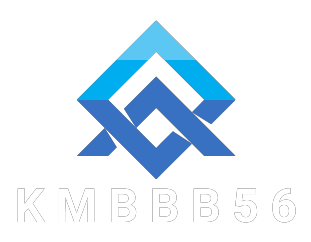
The digital landscape is undergoing a profound transformation, and at the forefront of this evolution is Web3 Development. This new paradigm promises to decentralize the internet, empowering users and creating a more democratic online ecosystem. Gone are the days of centralized control by a handful of tech giants; Web3 envisions a world where individuals can interact, transact, and collaborate in ways that prioritize privacy, security, and ownership.
As we delve into the future of Web3 Development, we explore how innovative technologies like blockchain, decentralized finance, and smart contracts are reshaping the way we think about online engagement. With developers at the helm of this revolution, the potential for creativity and innovation is limitless. From building decentralized applications to fostering new economic models, the Web3 landscape is a fertile ground for pioneers who are eager to push the boundaries of what is possible in our interconnected world.
Understanding Web3 Technologies
Web3 development represents a significant shift in how applications are built and utilized on the internet. Unlike traditional web applications that rely on centralized servers and databases, Web3 technologies leverage decentralized networks and protocols, such as blockchain, to empower users with greater control over their data and digital identities. This transformation allows for the creation of applications that prioritize transparency, security, and permissionless access, ultimately fostering trust within digital interactions.
At the core of Web3 development are decentralized applications, or dApps, which operate on blockchain networks. These applications eliminate the need for intermediaries, enabling peer-to-peer interactions and decentralized ownership models. Developers are harnessing smart contracts, self-executing agreements with the terms directly written into code, to automate processes and reduce reliance on third parties. This innovation not only enhances efficiency but also creates new economic opportunities and business models.
Furthermore, Web3 technologies are centered on the principles of user empowerment and self-sovereignty. Users can interact with platforms without surrendering control of their personal information, thanks to decentralized identity solutions and cryptographic protocols. As Web3 continues to evolve, the emphasis on user-centric development will play a crucial role in shaping a more equitable digital landscape where individuals have the agency to manage their online experiences and assets.
Challenges in Web3 Development
Web3 development presents a host of challenges that must be addressed for its potential to be fully realized. One of the significant hurdles is the complexity and steep learning curve associated with blockchain technologies. thirdweb Many developers transitioning from traditional web development may find themselves grappling with new programming languages, decentralized architectures, and the intricacies of smart contracts. This can slow down the pace of innovation as teams work to overcome these technical barriers and acquire the necessary skill sets.
Another challenge lies in interoperability among various blockchain networks. Each blockchain operates under different protocols, which can create silos of information and limit the seamless exchange of data and assets across platforms. Developers must find ways to bridge these gaps, requiring collaboration on standards and protocols. Without effective solutions for interoperability, the goal of a unified web experience across decentralized applications could remain elusive.
Lastly, scalability poses a significant challenge in Web3 development. Current blockchain solutions often struggle to handle the same volume of transactions as traditional web systems. As user adoption grows, the bottlenecks in transaction speeds and costs can become a deterrent for developers and end users alike. Exploring innovative scaling solutions such as layer two protocols or alternative consensus mechanisms will be crucial for fostering a sustainable and efficient Web3 ecosystem that can support widespread use.
The Path Forward: Strategies for Innovation
To drive innovation in Web3 development, it is crucial to foster a collaborative environment among developers, entrepreneurs, and users. Encouraging open source contributions can significantly enhance the pace of development by allowing diverse talents to contribute their unique perspectives and skills. Platforms that support community engagement and facilitate knowledge sharing will help to build a rich ecosystem where innovative ideas can thrive.
Investing in education and training programs tailored to Web3 technologies is vital for nurturing a skilled workforce. By equipping developers with the necessary tools and knowledge of decentralized protocols, blockchain, and interoperability, organizations can ensure a continuous flow of innovative solutions. Creating boot camps, workshops, and online courses focused on Web3 will attract new talent and promote best practices in development.
Finally, embracing an agile approach to development will allow teams to respond swiftly to emerging trends and user feedback. Utilizing iterative processes and rapid prototyping can lead to more resilient and user-centric applications. As the landscape of Web3 evolves, the ability to pivot and adapt will be essential for sustaining innovation and addressing the needs of a decentralized future.
